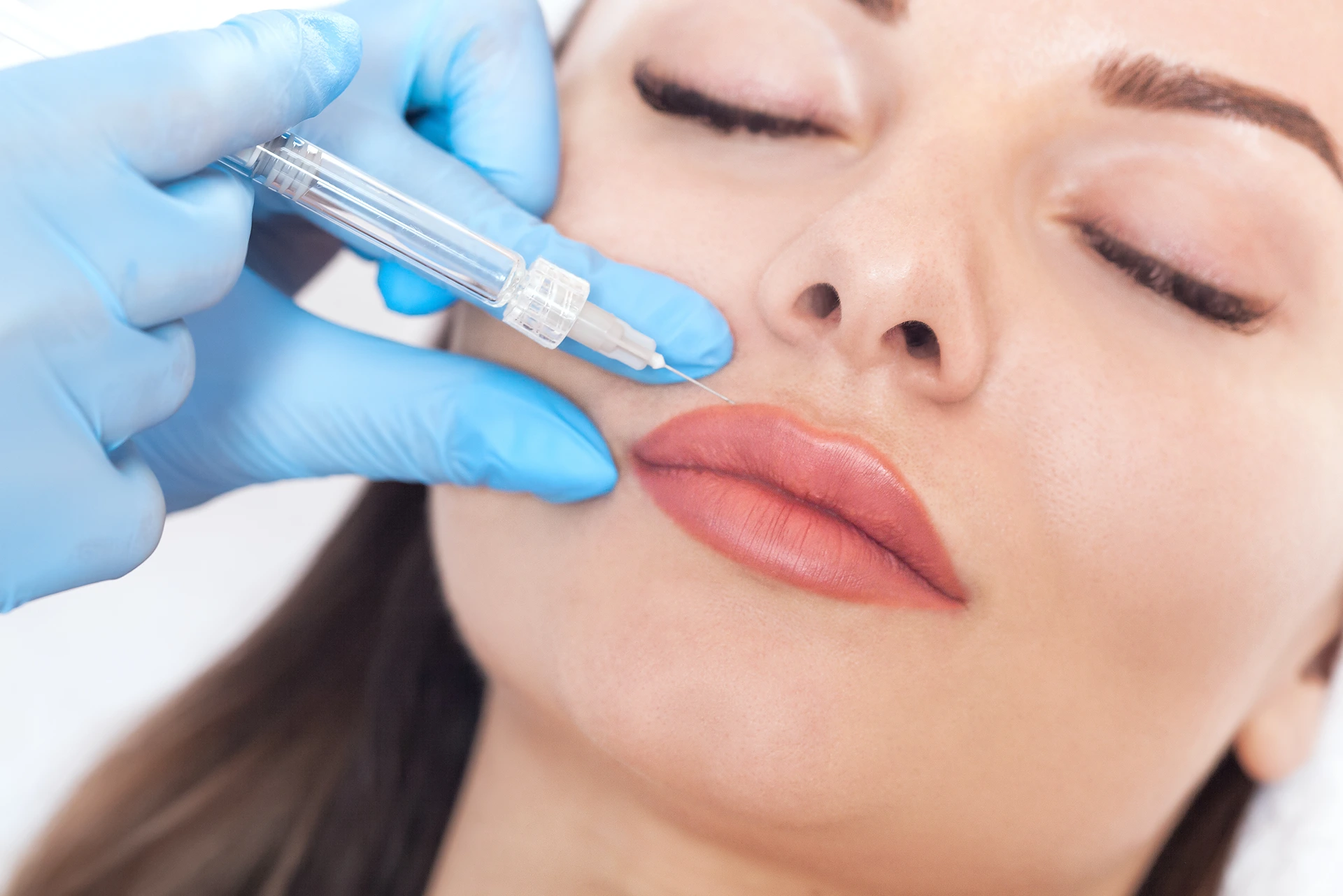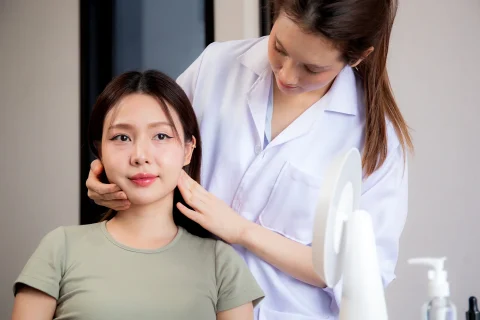From Swelling to Settling: A Timeline of Lip Filler Procedure
In today’s era of cosmetic enhancements, lip fillers have become the talk of the town, promising fuller, lusher lips with just a few strategic injections.
But once you’ve taken that step, a pressing question lingers: How long until these fillers truly settle in, revealing the final glamorous result?
If you’re pondering this very query, or simply curious about the transformative journey of lip fillers, you’ve arrived at the right spot.
From the intricate details of the procedure to the nuances of post-treatment care, this guide will walk you through the thrilling timeline of lip enhancement. So, lean in and let’s uncover the mystique of this much-raved-about beauty treatment.
Everything You Need to Know About Lip Fillers
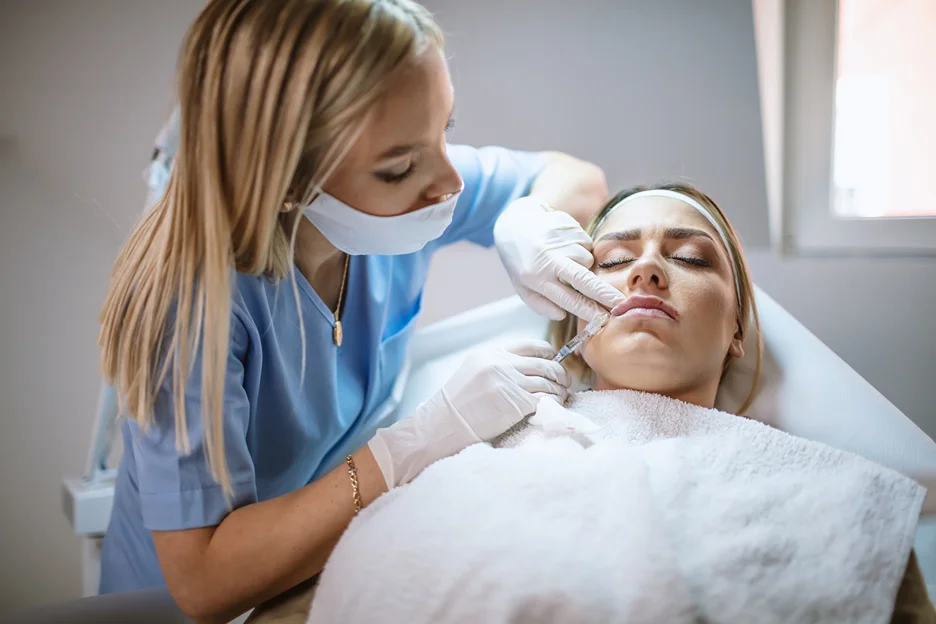
Lip fillers are specialized injections introduced to add volume and structure to the lips. Derived mainly from hyaluronic acid, a substance naturally occurring within our bodies, they’ve become a go-to solution for those seeking aesthetic enhancements.
Brands like Juvederm®, Restylane®, and Perlane® have made their mark in the world of dermal fillers, gaining trust for their quality and results.
Now, why consider it?
- Restoration of Age-Related Volume Loss: Time can cause our lips to lose their plumpness. Lip fillers step in to return that youthful fullness.
- Symmetry and Shape Correction: Achieving that balanced look is possible, especially when lips naturally differ in size or shape.
- Wrinkle Smoothing: Those laugh lines that emerge over time? Lip fillers can address them, making your smile even brighter.
- Amplifying Lip Size: For those desiring a more pronounced pout, lip fillers offer a viable solution.
- Lip Hydration: Beyond aesthetics, the hyaluronic acid in fillers provides much-needed hydration for those battling dry or chapped lips.
- Tackling Fine Lines: The region around our lips can reveal fine lines, and lip fillers can help minimize their appearance.
The Lip Filler Treatment: From Procedure to Final Results
Lip fillers have become an immensely popular procedure for those seeking plumper, symmetrical, and more youthful-looking lips. Let’s delve deeper into this transformative journey, highlighting the nuances of what you can expect during and after the cosmetic treatment.
The Procedure: What to Expect
Step 1: Preparation
Before the magic happens, your lips need to be prepped. A topical anesthetic, typically a mix of benzocaine, lidocaine, and tetracaine (collectively known as BLT), will be gently applied.
This ensures you’re as comfortable as possible throughout the process. For those who have an allergy to BLT, a nerve block injection might be a safer option, providing the same numbing effect.
Step 2: Injection
With your lips suitably numbed, it’s injection time. Using a fine needle, the healthcare provider will meticulously inject the lip filler into specific areas of your lips. These might include the Cupid’s bow, the edges, or the corners of your mouth.
Each injection is strategic, aiming for symmetry, fullness, and a natural look. Some describe a slight pinching sensation, but pain isn’t something you should be feeling.
Step 3: Post-Injection Care
The procedure might be over, but care is ongoing. After the injections, an ice pack might be gently placed on your lips.
This is key in minimizing potential swelling and bruising. Until given the all-clear, it’s wise to avoid putting pressure on the treated area and steer clear of lip products.
Post-Procedure Healing Timeline: When Will My Lip Fillers Look Their Best?
Immediate After-effects
Post-procedure, you might be startled by the appearance of your lips—they could look a tad overfilled. This is entirely normal. Alongside this, you may notice redness, initial swelling, or feel tenderness.
Swelling is the body’s natural response, and an ice pack can be your best friend here. Some effects disappear within hours; others might linger for a couple of days.
Days 1-7: The Initial Settling Period
The day of the injection and the subsequent days are crucial. Swelling is most pronounced immediately after the dermal filler treatment but will begin to recede as days go by. Bruising, another common side effect, might also be evident.
Cold compresses can be a boon, reducing swelling when applied intermittently. As the week progresses, the fillers start to settle, and a clearer picture of the final result begins to emerge.
Week 2: Embracing the New Normal
By the second week, normalcy returns. Any residual swelling should have abated, and the lips should feel more “natural” in terms of appearance and sensation. It’s also the phase where many adjust to their new look, adapting to any minor changes in their daily routines involving their lips.
One Month Post-Treatment: Seeing the Final Results
A month in, what you see is likely what you get. The lips should have fully settled by this point, presenting you with the final outcome of the procedure. If there’s any aspect you’re unhappy with, this is the moment to reach out to your healthcare provider.
Critical Notes
Always keep in mind that the results of lip fillers are temporary. Most fillers, especially those based on hyaluronic acid, last between six months to a year.
And, if for any reason you aren’t content with the results, there’s an option for reversal: an enzyme known as hyaluronidase can be injected to dissolve the filler.
As is the case with all cosmetic procedures, the outcome heavily hinges on the expertise of the professional administering the treatment.
So, do your homework, seek out reputable practitioners, and always prioritize safety over aesthetics.
Factors That Shape Your Lip Filler Experience
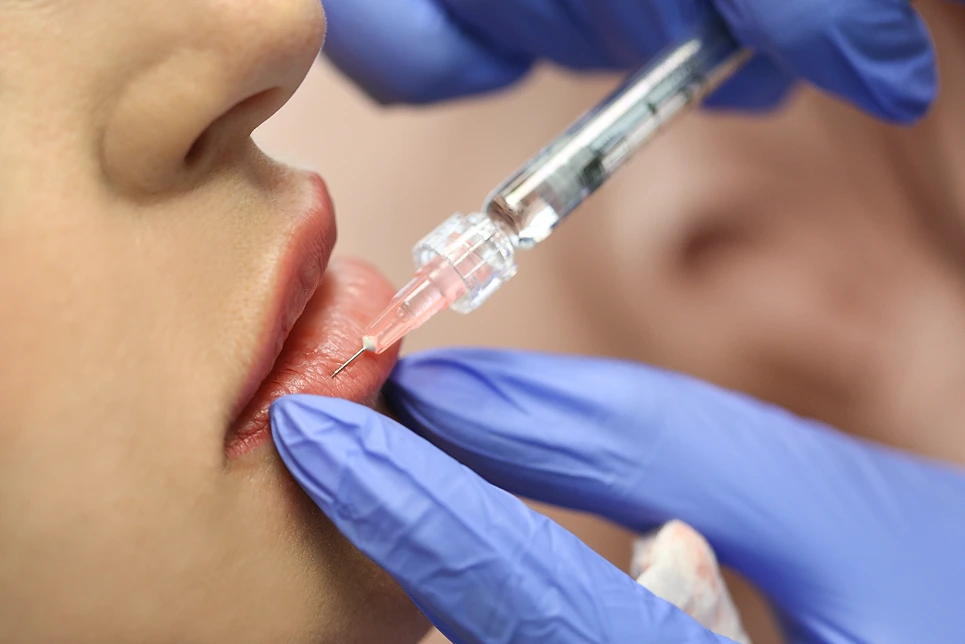
Lip fillers, while transformative, are as much an art as they are a science. Many variables play into achieving the desired results. Understanding these factors can help set realistic expectations and contribute to a smoother, more satisfying experience.
Technique Matters: The Hands Behind the Magic
- Site of Injection: The depth and location of the injection influence how long the filler lasts. Surface-level dermal filler injections might dissipate faster, while deeper ones tend to have prolonged results.
- Mastering the Technique: The lip injection technique has a pronounced impact on the final appearance. This is why choosing a seasoned professional is crucial. Their method can determine symmetry, lip volume distribution, and overall aesthetics.
- The Filler Type: Not all fillers are made equal. Their composition, viscosity, and other properties can dictate the longevity and look of the enhancement.
Your Unique Blueprint: Physiological Considerations
- Selecting the Right Candidate: Ensuring that the patient is a suitable candidate for fillers is paramount. This can help sidestep potential complications and ensure a harmonious result.
- History in Focus: Knowledge of a patient’s medical history, including past allergies, autoimmune conditions, or surgeries, can be pivotal. Such information can guide the practitioner’s approach and the choice of filler.
- Anatomy’s Role: Every individual’s lip and facial anatomy is distinct. The contours, natural lip volume, and structure will dictate the placement, amount, and even type of filler.
Aligning Goals: Between Desire and Delivery
- Managing Expectations: While lip fillers can do wonders, it’s essential to remain grounded in reality. Unrealistic expectations can lead to disappointment, even if the procedure was executed perfectly.
- Visualizing the Ideal: The envisaged lip shape and fullness play a determining role in the procedure’s approach. Both the patient and practitioner should be aligned in this vision for optimal satisfaction.
Potential Hurdles: Risks and Side Effects
- Common After Effects: Post-procedure, it’s not uncommon to experience bleeding, swelling, or bruising at the site of injection. These effects are temporary and part of the healing process.
- Rare but Noteworthy Risks: While unlikely, infections, allergic reactions, and even vascular complications can arise. The latter can be gravely serious, underscoring the importance of a seasoned professional’s expertise.
Aftercare 101: Nurturing Your New Lips

Once you’ve taken the plunge and opted for lip fillers, the journey doesn’t end in the practitioner’s chair.
The days following are crucial to ensure the longevity of the treatment and to minimize any side effects. Consider these aftercare tips as your playbook to maintain those lush, plump lips.
Why Aftercare Matters
Post-procedure care can make or break the results of your lip filler treatment. Proper aftercare minimizes potential discomfort, reduces side effects, and helps in achieving the desired effect. It’s not just about maintaining aesthetics but also about ensuring that the healing process goes smoothly.
Your Aftercare Checklist
- Take It Easy: Post-treatment, give your body a break. Steer clear of rigorous exercises to prevent increased lip swelling and bruising.
- Cold Compress Magic: Gently placing a cold compress around your lips can be a savior for swelling and bruising. Do this intermittently over the first couple of days.
- Gentleness is Key: For the next day or so, be mindful of your lips. Avoid any rough or excessive movements around the mouth area.
- Hydrate Inside-Out: Drinking ample water keeps your dermal tissues rejuvenated. It’s not just good for your overall health but crucial for those newly plumped lips.
- Lip Care: Consider using aloe vera or another recommended hydrating lip cream. They offer that extra boost of hydration and aid in healing.
- Elevate While You Sleep: Keeping your head slightly raised while sleeping can further help in minimizing swelling.
- No-No to Nicotine and Makeup: Refrain from smoking or vaping. Similarly, let your lips breathe, avoiding lipsticks or balms for at least a day post-procedure.
- Mind Your Diet: Hold off on hard foods, and consider postponing dental procedures or other invasive treatments around the mouth for a few weeks.
- Limit Alcohol: Alcohol can increase swelling. It’s best to curb its intake for a day or two after getting the fillers.
- Avoid Blood Thinners: Medications or supplements that thin the blood can increase the risk of bruising. Consult with your healthcare provider about any medications you’re currently taking and if they should be paused.
It’s always a good practice to remain vigilant post any cosmetic procedure. Adhering to these aftercare guidelines not only maximizes the beauty of the results but also ensures a safe and comfortable healing process.
Remember, when in doubt or if something feels off, reach out to your medical provider immediately. Your lips are an investment, and they deserve the best care!
Conclusion
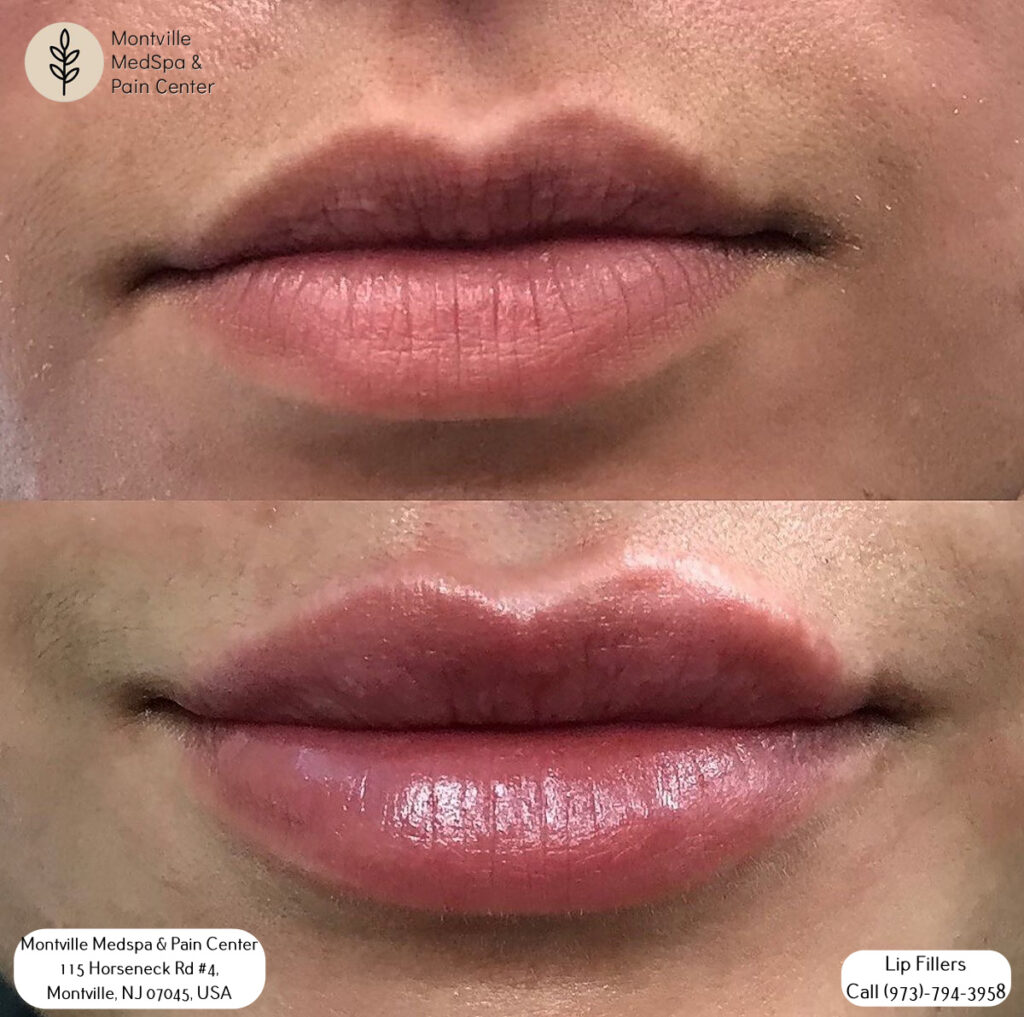
Lip fillers have certainly claimed their space in the cosmetic world, offering individuals a choice to enhance their natural features. From the detailed procedure itself to the intriguing healing timeline, understanding every facet is crucial.
It’s not just about the injection. The days and weeks following also play a significant role in the final appearance. Factors ranging from the practitioner’s expertise, the chosen filler type, and individual physiology can influence the outcome.
And, the emphasis on aftercare cannot be overstated. A well-informed approach, combined with diligent post-procedure care, can pave the way for those desired lush lips. As with any cosmetic procedure, knowledge is empowerment, and the choice is deeply personal.


